Setup A Marine Aquarium
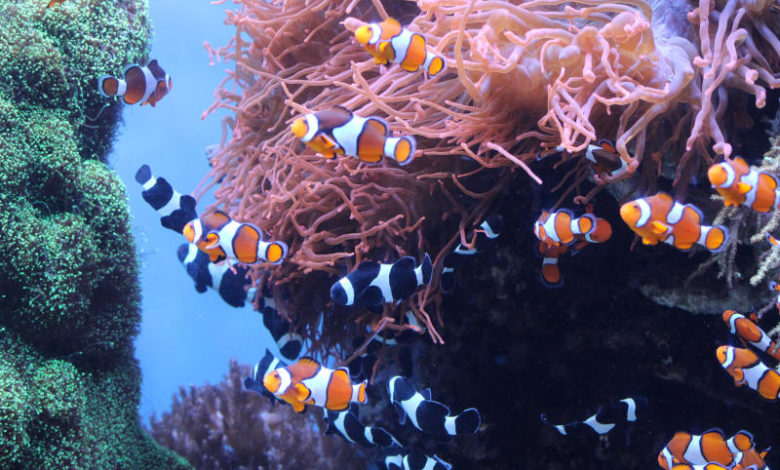
If you have reached here then you want to know how to set up a marine aquarium.
Setting up a Marine Aquarium is joyful and exciting. However, I must warn you that this hobby is addictive and expensive.
Creating a miniature marine world with some basic planning will not be confusing and will be a great experience.
Oceans cover 71% of the Earth which is the reason it is a blue planet. The Aquarium hobby goes way back in history when goldfish were kept in large porcelain tubs.
This hobby of keeping fish in a tank started gaining popularity in the 19 century. Now it is one of the most popular hobbies in the world. Earlier it was considered almost next to impossible to keep saltwater creatures but with technology and research, this has changed.
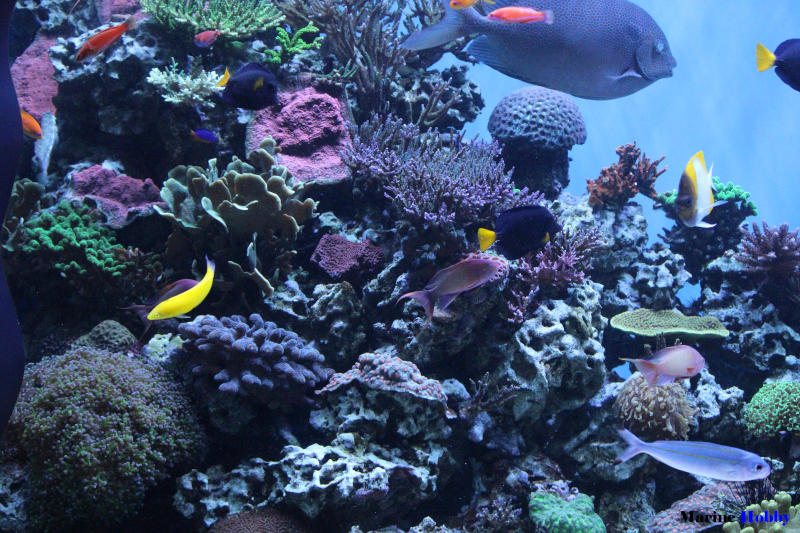
Steps for Setting Up A Marine Aquarium
Most of the equipment and techniques used for Saltwater Aquarium are much like freshwater. Anyone who has already been in the freshwater hobby would find this guide similar, to what they already do for their current tanks.
If you don’t know the difference between a saltwater aquarium and a freshwater aquarium below is a small video stating the differences;
Saltwater and Freshwater Aquarium
The major difference between a saltwater and a freshwater aquarium is water.
We add salt to the marine aquarium for the species to survive.
The other differences are in cost, maintenance and type of fish that goes in the system.
Temperature and lighting also play an important role if you are going to keep corals and invertebrates. Regular checks or tests are important in a reef system along with the quarantine system.
If you already have a hand in the freshwater aquarium, you will find your way into the saltwater aquarium hobby. You would also find it to be interesting and knowledgeful once you get into the hobby.
Plan for setting up a marine aquarium
In this guide, we are going to cover some of the important aspects that you should know.
Let us begin with a plan, as most fail because they never had a plan. Going random or spontaneous will be harmful to you and the creatures. Buying a tank, salt, fish and other filtration system is very easy these days. You just walk into an aquarium shop and buy whatever you need, planning will get your saltwater hobby to a greater distance.
You need to ask yourself a few things and write them down. Planning involves; What is the tank size, Tank Placement and Material? What Type of Lighting? Testing Equipment, Water Source and Treatment, Water Filtration, Quarantine Setup, What Fish do you Want to Keep? and lastly your budget.
Once you start writing down the plan, the chances of you going wrong will be almost zero. We don’t want to get a filter that is too small for the tank we have, or we don’t want to buy fish that is not suitable or buy less salt than the actual requirement. So, a plan will give out a framework which we will follow until the end.
Tank Material
We currently have two choices, Glasses and Acrylic, and both have its pro and cons. Glass is cheap and the other is on the higher side. Different shapes are available in Acrylic and impossible in glass. Both types of tanks can be drilled as per requirement. The final selection of material comes down to personal preference and the costing part.
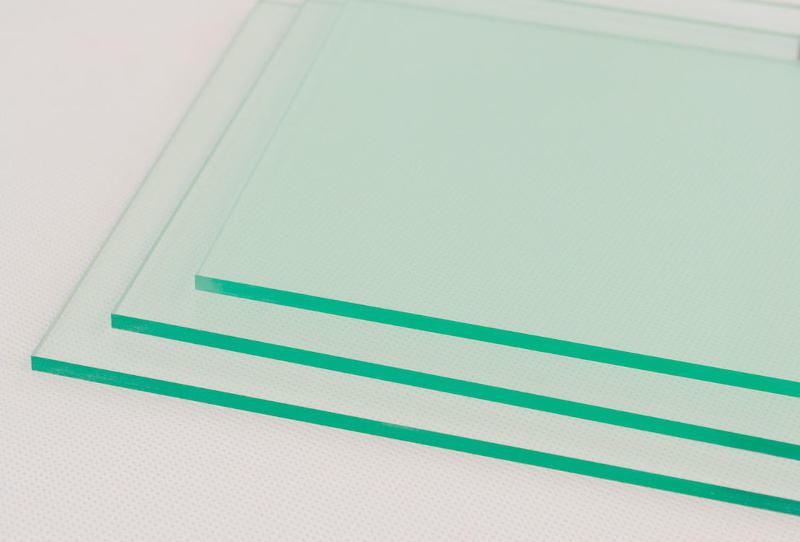
Tank Size for Setting Up A Marine Aquarium
Choosing the size of an aquarium is the most important aspect of the marine aquarium hobby. The golden thumb rule is to get the biggest tank possible.
In reality, we all have budgets that will restrict us from getting a wall-to-wall size tank. Choosing the tank size will be directly proportional to the amount you spend on the tank.
The larger the tank you have will have fewer temperature swings, and more forgiving to the beginner mistake such as overdosing, overfeeding and overstocking. A larger tank will give the hobbyist more choices in the selection of marine fish and Invertebrates.
Choosing a smaller size tank and later moving to a larger one will also be affecting your pocket as all the equipment would certainly require an upgrade.
I would suggest the optimum size for starting a saltwater tank is 48x24x24 inches (LxBxH), but again that is just a suggestion.
You can start with smaller tanks as well but then you have some restrictions don’t expect to have Lion Fish in a Nano size tank. Small tanks can be excellent with colonies of corals and one or two small fish.
Tank Shape
There are different shaped aquariums which are available as round, triangular and oval these all are possible with Acrylic and can be built as per custom requirements.
Choosing tanks with greater volume is important but so is the surface area. In simple terms mean the tank needs to be wider than taller, wider tanks will have more surface area for gas exchange compared to taller narrow aquariums.
Wider tanks have more room for aquascape as compared to narrow tanks. Wider and shorter tanks will be easier to clean for the beginning of the hobby.
These days we have so many shaped aquariums that will just out of the box from L-shaped to pentagons all are possible for setting up a marine aquarium.
Placement of the Tank
After deciding on the size and shape of your marine aquarium, you need to decide on the placement of the tank.
The tank must be in view and away from busy crowded spaces.
We don’t want to add stress to the marine fish. Stress will keep them in hiding all the time. Keeping the tank away from direct sunlight and away from the heater and air conditioning vents.
Make sure that you have enough electrical outlets for the equipment to work.
Tanks are often on stands or installed in the walls. For stands choose the material which does not react with salt water if you use mild steel it will eventually rust. Unpainted wood will be hammered by the water and will collapse with time.
Filled aquariums are heavy so, choosing solid and sturdy stands is the right choice. Laminated woodwork or Fiberglass-Reinforced Polymer (FRP) will be a great choice.
If you are deciding to keep the tank on a shelf then place the tank in a way that there is enough space in the top and bottom.
As we set up, the tank all the equipment for filtration goes beneath the tank’s so-called Sump. There has to be enough space for fitting these skimmers and later cleaning them. Take note of headroom for putting lights on while setting up a marine aquarium.
Lighting for Setting Up A Marine Aquarium
All the fish currently being sold are from the shallow part of the reefs. They look vibrant and well under good lighting.
The dimly lit marine aquarium will not look that great.
Other aspects of lighting which are connected to the height, depth and length of the tank are the height of the lights placed. Lights can be metal halides to new fixtures of LED.
The light must be installed on the top of an aquarium, so headroom is important when thinking of the placement of the tank.
One should also keep in mind that lights should not have a heating effect on the water too much. Lights can be installed as complete LED or Tube fixtures or have custom-made hoods to place them. Blue actinic bulbs and tubes are widely available these days mostly we mix them with white colours ones.
Blue light is the one which will penetrate the water and give out that pleasing view that we all desire. We will talk more about lights in detail in the later section.
Filtration for Setting up of Marine Aquarium
Marine Aquarium filtration is one very crucial step in the hobby and should not be taken lightly. This is the far most important and interesting topic talked about in the hobby. Filtration has only one aim to keep the water quality to its best. Filtration involves equipment such as the protein skimmer, wavemakers for circulation, mechanical filtration and other reactors.
Protein Skimmers
This is one piece of equipment which is only for saltwater tanks and freshwater keepers would have not heard.
A protein skimmer is a PVC or Acrylic tube with and collection cup at the top. The water is continuously injected into the apparatus along with fine air bubbles. These bubbles can be via air pumps or wooden air stones. The air bubbles attract dissolved wastes, detritus and other complex organic compounds to the surface and get collected in the chamber on the top.
We currently have different types and brands of skimmers available these days from Hang on the back to external then we have cone and tube-shaped.
For the first time, I would suggest in-sump good protein skimmers matching the water volume of your display tank.
Wave Makers in Setting Up A Marine Aquarium
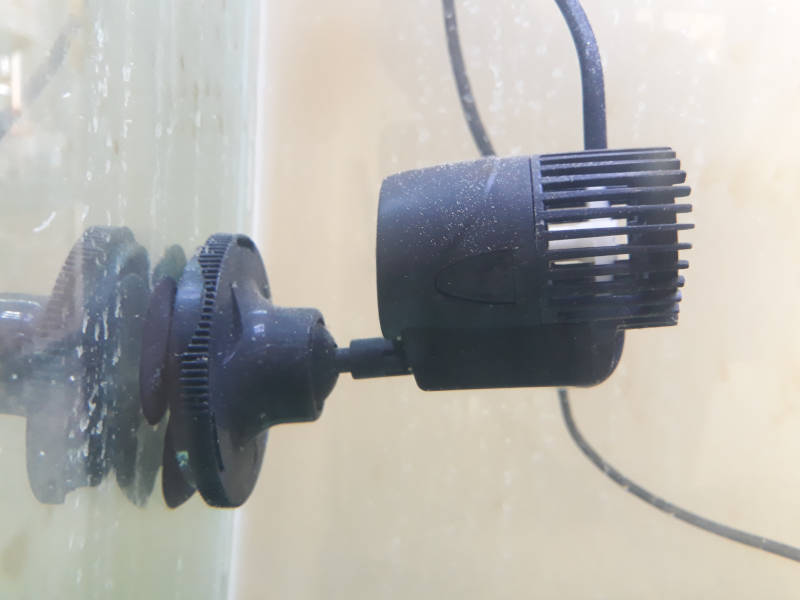
Wave Makers are one very important and inexpensive piece of equipment required for the circulation of water and for forming waves in the tank. These are also widely available in the market.
We even have a controller system nowadays. The general rule is to get wave makes that have the capacity to turn water 5 to 10 times to the capacity of the display tank.
Mechanical Filtration
In freshwater, we have these filters called external power filters or canister filters. These can be used for extracting solid wastes from aquarium water.
We also have an option of installing a SUMP below the main display, which is again an aquarium tank with a section with all kinds of custom filter media.
SUMP can also be used for storing other equipment when required such as heaters, chillers, thermometers and other reactors.
Heaters
Heaters are the equipment which will keep the aquarium water warm in winter as most of the saltwater fish comes from tropical waters. So, keeping water at a temperature between 23 to 26 degrees C is advisable. Heaters are inexpensive and should be cleaned and checked regularly.
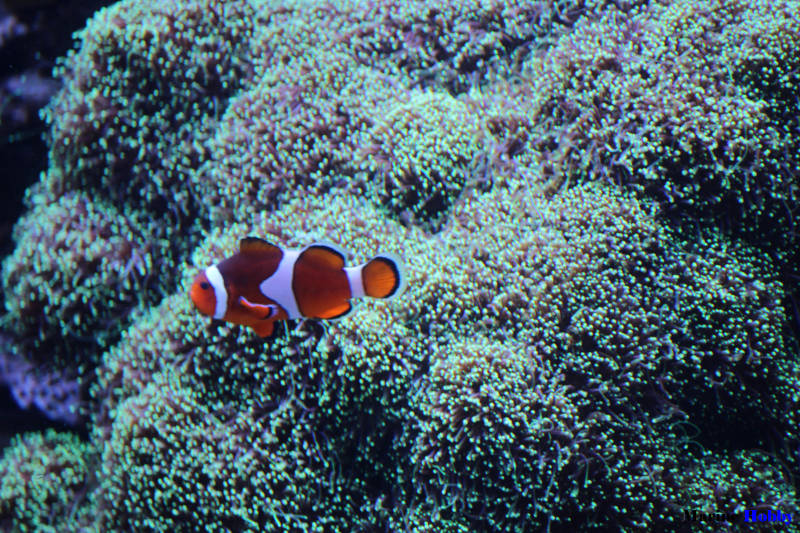
Chillers
For places with hot summers, a chiller is a piece of equipment which acts as a refrigeration system for the aquarium.
It pushes water from the sump to the chiller inside a copper tube, which with the help of a compressor cools down the water and makes its way back to the sump.
Chillers are expensive and power-hungry. For places like mine where summers are very hot and longer compared to winter, this equipment helps in bringing the water temperature down to 23 to 26 degrees C.
Thermometer
A plain simple tool that will help in knowing the temperature of the water, this can be glass or digital as per your preference.
Hydrometer and Refractometer
This tool is required to know the salinity of the water there are many different tools for checking this;
Top tools for checking salinity in our tanks
Test Kits
Testing your marine aquarium water is necessary and to be done regularly. With the naked eye, water seems clean and clear but we should be looking at the water with the purpose of keeping marine fish.
Ammonia or the drop in pH level can be damaging to the marine life in your saltwater aquarium. Test Kits are available in the market some of the most required tests are ammonia, pH, nitrate and nitrite.
Salt for Setting Up A Marine Aquarium

Marine or saltwater aquarium without salt is not possible, so, synthetic sea salt will convert normal water to seawater. Different brands and different sizes are available these days.
Just make sure to procure enough sea salt for your display tank and for future water changes.
Rock and Substrate
These are for scaping of the tank and rock also acts as biological filtration. These days lot of Marine Aquarium Shop offer live rock, well I am quite against a live rock from the ocean;
Disadvantages of Ocean Direct Live Rock in a Marine Tank
Sand or crushed corals are also available in the market;
Getting the Right Substrate for Your Marine Aquarium
Water Additives
Water additives and conditioners are for the treatment of the water. There are so many of them now. You can buy them from any local fish store or just buy them online.
Miscellaneous
We would be requiring certain more items such as power cords, PVC buckets, activated carbon, nets, hosepipes and other miscellaneous items which we will talk about in later sections.
Making of Saltwater
Saltwater is the essence of a saltwater aquarium and any knowledge of the water condition on the reef is beneficial. Seawater contains ions and some trace elements, and it becomes very important for us to replica the water parameters as on the coral reefs.
We currently have water sources such as well water and tap water. We in some cases can get water direct from the sea but be advised that that water will have pollutants, pests and unwanted bacteria.
Water from the wells would contain a good concentration of heavy metals, nitrate or phosphate.
Lastly, we have tap water which is pumped by municipal corporations. The tap water may be fit for drinking, but this water may contain elements which are worst for aquariums.
As per WHO in 2017 up to 50 mg/L of Nitrate and Copper up to 2 mg/L is permissible in drinking water. Different states and cities will have different compositions. I would advise checking your local water as it will be very different. This permissible in drinking is not at all acceptable in the marine aquarium setup.
We can use RO or DI for clean water, reverse osmosis is nowadays available in most households and would pretty much give out the good water. A Deionization system further with mixed bed-charged anions and cations would purify water even further.
Salts for Setting Up a Marine Aquarium
Once you have figured out the water source, we now require good synthetic salt and please don’t mix this with the Iodized table salt we have in our homes.
There are some very reputed brands with offer good quality aquarium salt. You need water, salt and a water pump in a PVC bucket for mixing.
Never add salt directly to the aquarium if you have fish or invertebrates in them. Wait for a period of 48 hours before adding it to the display tank this will settle down the pH and will not give any variation shock.
Salinity
Saltwater is denser compared to normal water and we now must test the salinity.
The normal salinity of a marine tank kept at move would read any water between 1.022 to 1.026.
For fish, only systems salinity can be kept at a lower level from 1.022 to 1.024.
If you are planning to keep corals and invertebrates the salinity is at a higher level from 1.024 to 1.026.
Keep in mind cool water is denser than warm water. That is the reason why most of the salinity testers are calibrated for the best reading at 25 degrees C, so advisable to check the water at this temperature.
pH
pH is the ratio between hydrogen to hydroxide cutting the chemistry too much, the seawater at the shallow reefs is 8.4.
So, keeping the pH in the aquarium from 8.2 to 8.4 is great and my suggestion is to keep track as pH tends to decline after some time. Use pH buffers if required to get it to the right level.
Alkalinity
This is to measure the buffering capacity which would resist the lowering of pH in the aquarium.
The goal is to keep the dkh (the degree to Carbonate Hardness) between 7 to 10.
Keeping high alkalinity in the saltwater tank will prevent the decline in pH. Buffers are available in the market from various brands for setting up a marine aquarium.

Nutrient Cycle
All organisms will produce waste and if let this waste remains in the tank, waste will turn to ammonia which will be very toxic for the fish and other organisms. This happens in the wild too, but nature is capable of converting and filtering. In our home aquariums, we have limited water and we use biological and mechanical filtration to scoop out the harmful ammonia.
Biological Filtration
We need to prevent the toxic ammonia and rapidly convert it or break it down to less harmful nitrite and further to nitrate. This action takes place in our saltwater tank via beneficial harmless bacteria.
First, the ammonia is converted to nitrite and then the bacteria convert nitrite to nitrate.
Mechanical Filtration
Most of the biological filtration is not visible to our naked eyes other than the waste generation. Mechanical Filtration is very much visible, waste is removed via filter socks or sponges. These days we have hanging on the back or canister filter or custom sumps doing this for us. It is important that we keep cleaning the filters so that decay of matter doesn’t happen. Protein Skimmer also plays a crucial role in filtering aquarium water.
Chemical Filtration
Chemical filtration basically means the use of some kind of filter media which will help in removing nutrients from the aquarium water.
Activated carbon will remove the yellowness of the water and odour.
Then we also have phosphate removal media which will restrict the algae bloom in the aquarium and reduce the phosphate in the water column.
These media for setting up a marine aquarium are available in most aquarium shops and online e-stores.
Water Movement in Saltwater Aquarium
Now for all filtration, we require that there is good water movement;
Creating adequate water movement in an aquarium is important
Starting the Marine Aquarium Setup
This step is by far the most interesting and exciting one because we move from an empty tank to a level where we can introduce Marine life.
This process is not a one-day process and would take some days to months to establish the ecosystem.
Patience is the key factor and skipping steps would cause issues later in the future.
Take your time to check the tank and equipment available to you.
Placing and Cleaning the Tank
For the first time clean the saltwater aquarium with a sponge, make sure there is no soap or any other chemical, or oil on the glass, remove all the dust. Use acetone to clean the fingerprint or any other residue. Wash the glass or acrylic with clean water. Carefully place the aquarium as per plan. Glass is very fragile and can crack or break if anything drops on it.
Check Stand and Aquarium Level
Check the level of the stand and the aquarium that they are balanced and not tilted on one side.
If the aquarium is tilted balance it with a log of wood or any other material.
The tilted aquarium would put pressure on one side and eventually leak or break. Do add foam or a soft Polystyrene sheet below the aquarium.

Filling and Testing
Fill the tank with water and test the equipment, plugin all of them and let them run for a few hours.
This way we would come to know if we are missing something.
This will be the first time, the thank will be running in full flow. Here, test every piece of equipment you have to the fullest.
Draining
Once you have tested the saltwater aquarium tank completely, now drain its water in the tank completely.
This will also help in knowing when you do a water change what all you would require. You can use pipes or buckets at your convenience.
Adding Rock and Substrate In Marine Aquarium
Add rock and Substrate, and do your aquascape. Add rocks first but make sure to place them gently any great fall can damage the bottom glass. Then add the sand or crush the corals.
Filling Saltwater
Add the saltwater in the aquarium completely and complete your scaping if anything is left.
Let the aquarium equipment run for a few days. If the water turns milky don’t worry it will settle down in some time.
Keep checking for any leaks or pH and salinity of the water. Let the system run for a few days, and keep checking the temperature at night and with your lights on.
A good way is to maintain a log of what is happening with the water parameters.
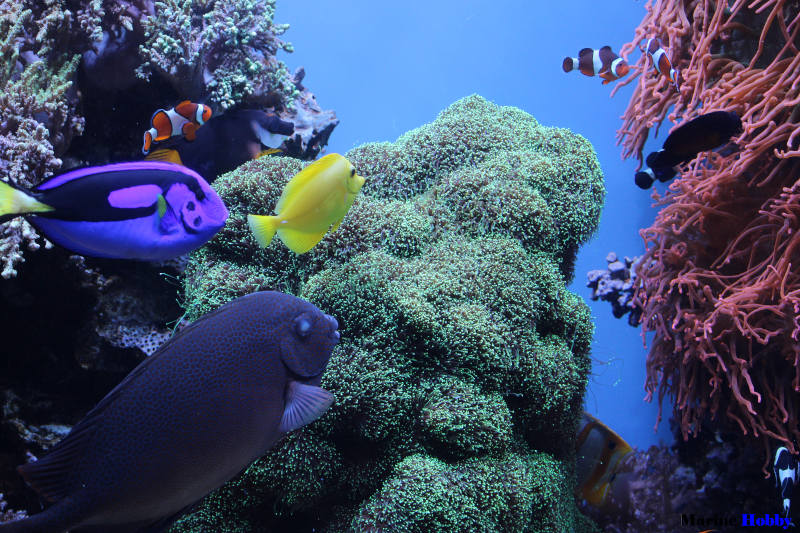
Starting Quarantine System
Quarantine System is a good investment which will help you in keeping diseases away from the display tank. Quarantine tanks are just plain simple aquarium tanks with PVC fittings a sponge filter and an air pump.
All the above steps are similar to the quarantine tank. Less the substrate and rocks which might react to the fish medic. Adding some fish food in the tank would start the process of ammonia building and adding some beneficial bacteria available in the market is a good option.
Let the system run for 3 to 4 weeks and test the water regularly.
Lastly, add some starter hardy fish, like the dart or the Chromis or the damselfish after the cycle is over.
Watch the fish carefully for a period of 3 to 4 weeks for any indication of trouble. The first fish will also undergo an acclimation process which we will discuss in the later section of the selection of fish.
Water Cycle
Setting up a marine aquarium and cycling of the display aquarium is something which will be known by most aquarium keepers.
It means that there are enough beneficial bacteria in the tank with will break down ammonia into nitrate. This can be checked via test kits and for starting to get the first quarantined fish in the display for ammonia generation. Once you start feeding the fish the water cycle will begin.
Testing water is important and should be done every week. Within 3 to 4 weeks you would notice the water cycle when it starts and ends.
Complete the Loops and Let it Run
All this is done time now is to complete the loops if any clean up the mess that has been created for doing all the above. Sit back and enjoy the scaping of your aquarium. Let the aquarium run for a few days. Keep testing your saltwater.
Selecting Marine Fish
This is another interesting topic, but do remember buying the wrong fish will cost you. So, plan what type of fish you want there are aggressive, semi-aggressive and docile as per my thoughts. There can be a number of ways people and shopkeepers define a fish;
Marine Aquarium Fish in India which we Love to Keep
Remember While Buying A New Fish
It is important that you get to fish one at a time and make sure that it is eating well. There are some wrong practices when these fish are caught in the wild try to avoid them.
These days we are getting aquaculture marine specimens which are again a great choice. Once you get a fish it is important to put it through the quarantine process.
Quarantine Process
When you get a new fish, firstly float the bags in the quarantine tank. This will match the temperature of the tank to the water in the bag gradually. After 15 to 20 minutes take a container and empty the bag in it with the water. Now slowly in small quantities add tank water to the container.
You can also give the new fish a freshwater dip for removing the parasite if any on the fish. Take the fish and add it to the quarantine system. Just make sure no water from the bag gets in the tank. The fish should be fed 2 to 3 times a day and watched closely for any signs of diseases and parasites.
Every new fish must undergo the quarantine process for a period of 3 to 4 weeks.
If you spot any unusual behaviour treatment in the QT is important. You can use fish medic or lower the salinity for common parasites to die off.
Fish, Food and Display Tank
Once your new fish is quarantined for a 3 to 4-week period, it is time to add the fish to the main marine aquarium display tank. The same process of matching the water temperature, and acclimating the fish with the display tank water goes here.
Hang inside small betta boxes is very useful for first placing the fish in the boxes, there the box must contain holes for water to circulate. Now release the new fish in the display and watch the fish carefully.
New fish will in the start go in hiding, make sure when you add the fish all your equipment is switched off for 20 to 30 minutes. After that switch on all the equipment and observe the new fish.
If you witness aggression between any of the fish take the fish and place it in a betta box for some time.
The aggression is due to established territories. If the aggression is not over, take the old fish place it in the box and let the new fish go in the tank. After a period of 5 to 10 days release the old fish. Keep a watch on the aggression and the fish in your marine aquarium.
Marine Fish Food
Food is important and I suggest buying some food before getting the fish, some good flakes and small-sized pallets.
A well-acclimated fish will eat food instantly. Smart feed your fish and do not overfeed. More food will have more Bio-load. The amount of food that the fish consume in 3 to 5 minutes is advisable.
There is small equipment available which helps in realistic feeding use them if not sure about the quantity and remove excess food once done.
In the wild fish gets a variety of food so our home aquarium has to depict the same, offering food in the form of flakes, pellets, frozen and thaw food.
Live food like brine shrimp is also a good food option.
Maintenance and Cleaning after Setup of Marine Aquarium
Equipment and the Saltwater tank are expensive items. So, routine maintenance and cleaning are important.
Water changes are important and should not be overseen in a saltwater aquarium. Clean the mechanical filters, the protein skimmers and other equipment regularly.
If you notice any detritus in the tank take it out via suction pipes. Test the water and add the trace elements if required. Lights over a period of time lose their power so, changing lights is also good.
Check ammonia, nitrite and nitrate regularly.
Now you have a guide and have started a marine aquarium of your own, looking at your aquarium regularly will help in identifying any open issues in the running.
It is that time in the hobby when you relax, sit back and see the amazing colours in the tank and wonder.
P.S. – If I have missed any section will add it soon and will also be adding some new techniques down below as we know technology and science are changing the Marine Aquarium Hobby regularly.
